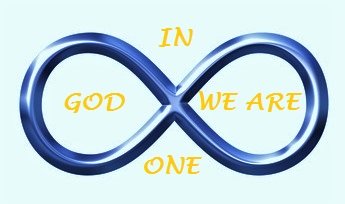The Origin and Evolution of Religious Belief Systems
Such as Christianity:
A Critical Examination
Religious belief systems have always been a part of human history, evolving and adapting over time. One prime example of such evolution is Christianity, a religion that emerged from a complex interplay of cultural, social, and political factors. In this discussion, we will delve into the notion that all religious belief systems are adaptations of prior systems, often incorporating elements from the past into their own narratives. We will also explore the role of fear, dualism, and the human need for representation in shaping these belief systems.
I. Adaptation and Continuity in Religious Belief
The idea that religious belief systems are adaptations of earlier ones is a thought-provoking concept. It suggests that even seemingly new religions have roots in the beliefs and traditions that came before them. Christianity, for instance, demonstrates how elements of previous belief systems were woven into its fabric.
To explore this further, one can turn to works like "The Story of Civilization" by Will and Ariel Durant and "Caesar's Messiah" by Joseph Atwill. The Durant's engaging writing style provides insight into the evolution of religious thought and history, while Atwill's research, though comprehensive, can be considered less captivating in its presentation.
The documentary "Caesar's Messiah" offers an entertaining exploration of Atwill's thesis, effectively conveying the message of his book. This documentary encourages us to critically examine the origins of Christianity and the motives behind its creation.
II. The Pragmatic Origins of Christianity
It is intriguing to consider the theory that Christianity was conceived by Romans as a means of pacifying a prolonged rebellion in the holy land. In addition to advocating pacifism and tax payment, Christianity incorporated themes from earlier belief systems. These themes included the virgin birth of God incarnate, the concept of dying for humanity's sins, holy communion, resurrection, baptism, the promise of eternal life, fear of punishment, and exclusivity – the belief that "our way is the only way." Antisemitic elements were also added for long-term impact, influencing perceptions for centuries.
According to Atwill, the creators of Christianity were pragmatic in their spiritual beliefs, viewing it as a social engineering project. Over time, this religious belief system gained favor among Roman elites and political leaders, ultimately leading to Emperor Constantine's decision to embrace Christianity for pragmatic reasons.
III. The Timing of the New Testament
The New Testament, considered by believers as God's word and therefore true, poses questions regarding the timing of its composition. Written over 60 years after the crucifixion of Christ, it seems like a lengthy delay in an era when there were no recording methods for preserving speeches, and widespread illiteracy prevailed.
Believers argue that scripture serves as a moral guide and source of truth, much like creationists who defend beliefs that challenge scientific evidence. Both groups, often motivated by fear, practice religions that define God within certain confines, rather than recognizing the infinite nature of the divine.
IV. Fear, Dualism, and Representation
Many religious systems utilize fear of punishment and desire for reward to manipulate believers. This tactic, akin to marketing strategies, taps into the human psyche. Fear of loss is often perceived as the most potent motivator, as exemplified by Christianity's emphasis on the fear of hell.
Christianity, like many belief systems, exhibits dualism, separating the world into opposing forces. This duality presupposes a condition of separation that contradicts the underlying unity of existence. Recognizing the non-dual nature of reality is a profound insight that often takes time to grasp fully.
Humans have a tendency to create representations of spiritual entities and deify them for worship. These deities draw their power from belief, existing as extensions of The One Holy Source. It is essential to recognize that everything and everyone is interconnected with this divine source, challenging the notion of separateness.
Conclusion
The evolution of religious belief systems, exemplified by Christianity, is a complex tapestry woven from the threads of history, culture, and human psychology. These belief systems often draw from the past, adapting and incorporating elements to create their unique narratives. Fear, dualism, and the human need for representation have played significant roles in shaping these systems.
As we reflect on the origins and development of religious beliefs, it is essential to engage in critical examination and open dialogue. Understanding the multifaceted nature of belief systems can lead to greater insights into the human quest for spirituality and connection with The One Holy Source.
Vespasian, Josephus, and the Birth of Christianity: A Historical Connection
Following is a more mainstream explanation of the origins of Christianity.
The emergence of Christianity as a world religion is a complex historical phenomenon with deep roots in the events and personalities of the first century AD.
At the heart of this transformative period were figures like Vespasian, the Roman Emperor, and Josephus, the Jewish historian, whose roles in the Jewish-Roman War of 66-70 AD and the subsequent writings played significant roles in shaping the religious landscape of the time.
This text explores the interconnectedness of Vespasian, Josephus, and the writing of the New Testament, shedding light on the events and dynamics that led to the creation and spread of Christianity.
I. Vespasian and the Jewish-Roman War
To understand the context in which Christianity emerged, one must first delve into the Jewish-Roman War, a pivotal conflict that altered the course of history. In 70 AD, the Roman Empire, under the leadership of Vespasian and his son Titus, laid siege to Jerusalem, eventually leading to the destruction of the Second Temple. The repercussions of this event were profound and had far-reaching consequences for Judaism, but they also created fertile ground for the growth of a new religious movement – Christianity.
Vespasian's decisive victory in the Jewish-Roman War was a defining moment in his reign as emperor, marking the end of a period of turmoil and rebellion in the eastern provinces. The capture of Jerusalem and the devastation of the city were seen as a triumph of Roman power and authority, solidifying Vespasian's image as a strong and capable ruler.
II. Josephus: A Jewish Witness and Roman Collaborator
Josephus, a Jewish historian, provides a crucial perspective on the Jewish-Roman War. Born in Jerusalem, he was a member of the priestly class and initially fought against the Romans as a military commander. However, he was captured during the siege of Jotapata in 67 AD and chose to collaborate with the Romans rather than face execution or enslavement.
Josephus' role as a witness to the events of the war is documented in his works, most notably "The Jewish War" and "Jewish Antiquities." These writings not only offer valuable historical accounts but also provide insights into the complex dynamics of the time. Josephus' decision to align himself with the Romans, even adopting the name Flavius in honor of the Flavian dynasty (Vespasian and his sons), has led to debates about his motivations. Some view him as a traitor, while others argue that he sought to preserve Jewish knowledge and history.
Josephus' writings serve as a bridge between the Jewish world and the Roman Empire. His works contain details about the siege of Jerusalem, the destruction of the Temple, and the Jewish resistance, providing invaluable historical context for understanding the rise of Christianity.
III. The Emergence of Christianity
The destruction of the Second Temple was a cataclysmic event in Jewish history. It not only led to the dispersal of Jewish communities but also triggered a reevaluation of Jewish religious practice. With the Temple gone, the central institution of Jewish worship and sacrifice was no more. This vacuum created an environment in which various Jewish sects, including early Christians, could redefine their beliefs and practices.
The emergence of Christianity can be seen as a response to this crisis. Followers of Jesus of Nazareth, who had been preaching in the region prior to the Jewish-Roman War, reimagined their faith in light of the Temple's destruction. Christianity's emphasis on spiritual worship and the belief that Jesus was the ultimate sacrifice for sins provided a theological framework that resonated with many Jews in the post-war period.
IV. The Role of the New Testament
The writings that would eventually form the New Testament played a central role in codifying Christian beliefs and practices. These texts, composed by various authors over several decades, were influenced by the historical context of the time. The destruction of the Temple, the Jewish diaspora, and the Roman occupation of Judea all shaped the theological and ideological underpinnings of the New Testament.
The Gospels, for example, present Jesus as the Messiah and the fulfillment of Old Testament prophecies. The epistles of Paul and other apostles provide guidance to emerging Christian communities and address theological questions. The Book of Acts chronicles the early spread of Christianity beyond its Jewish roots. All of these texts reflect the evolving identity of Christians as they sought to distinguish themselves from Judaism while simultaneously drawing on Jewish traditions.
V. Josephus and Early Christian References
Josephus' writings are notable for their potential references to early Christianity. One passage in "Jewish Antiquities" known as the Testimonium Flavianum has long been a subject of debate. It mentions Jesus and his crucifixion but is suspected by some scholars to have been altered or interpolated by later Christian scribes. Whether authentic or not, this passage attests to the growing presence of Christians in the first century and their interest in Jesus' historical context.
Additionally, Josephus' accounts of Jewish sects, such as the Pharisees, Sadducees, and Essenes, shed light on the diversity of beliefs within Judaism during this period. Understanding this religious landscape is crucial for comprehending how Christianity positioned itself in relation to its Jewish heritage.
Conclusion
The intertwined stories of Vespasian, Josephus, and the emergence of Christianity highlight the complex interplay of politics, religion, and history in the first century AD. The Jewish-Roman War and the subsequent destruction of the Second Temple set the stage for profound religious and cultural transformations. Josephus, as both a Jewish witness and Roman collaborator, provided invaluable historical accounts that help us grasp the context in which Christianity emerged.
The New Testament, with its Gospels, epistles, and Acts of the Apostles, crystallized the beliefs and practices of early Christians in response to these tumultuous times. While the exact nature of Josephus' relationship with early Christianity remains a subject of debate, his writings offer crucial insights into the religious and ideological landscape of the era.
In the end, the birth of Christianity was a multifaceted process, shaped by historical events, individuals, and theological developments. Vespasian, Josephus, and the authors of the New Testament all played their roles in this transformative journey, leaving an indelible mark on the religious and cultural history of the world.

